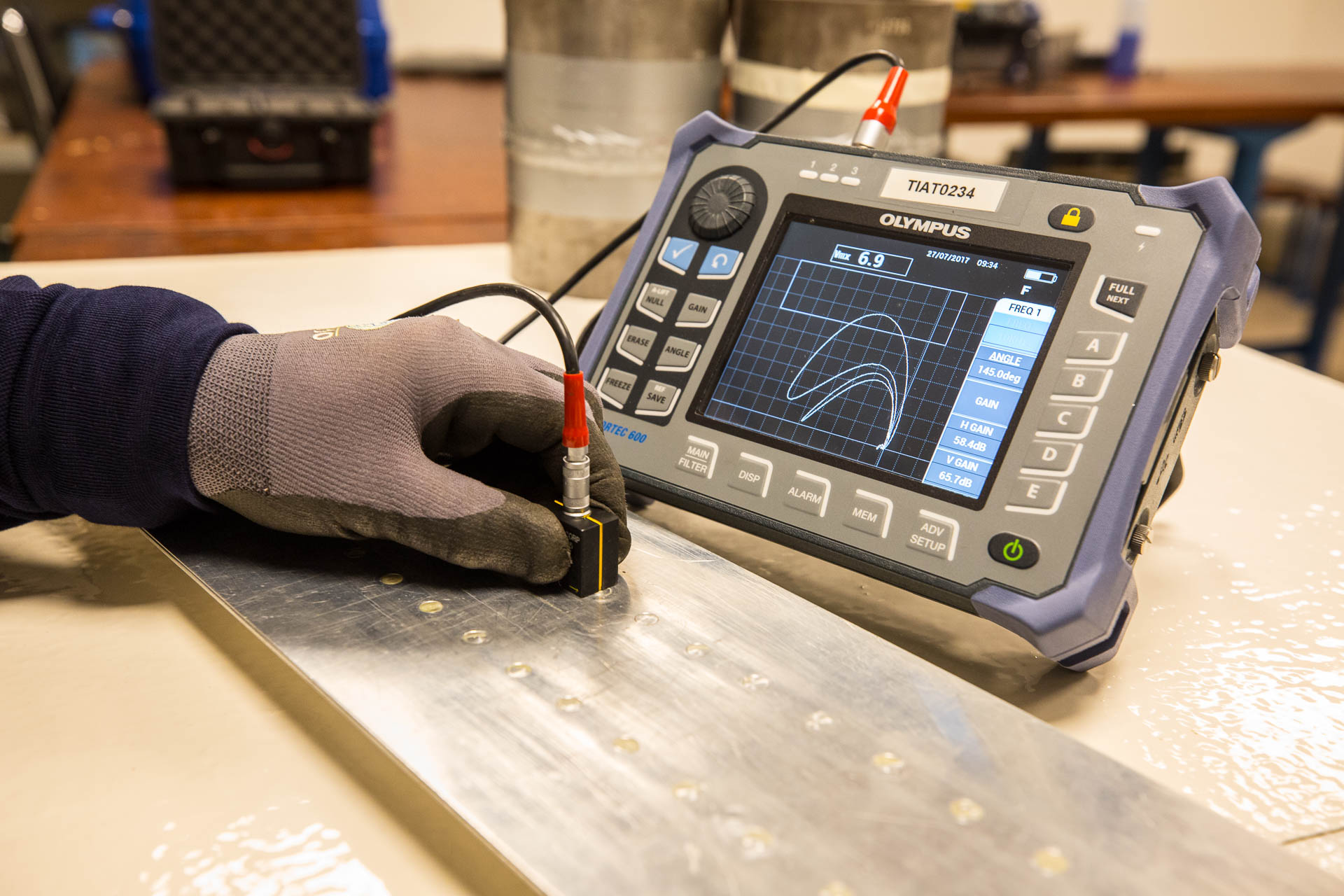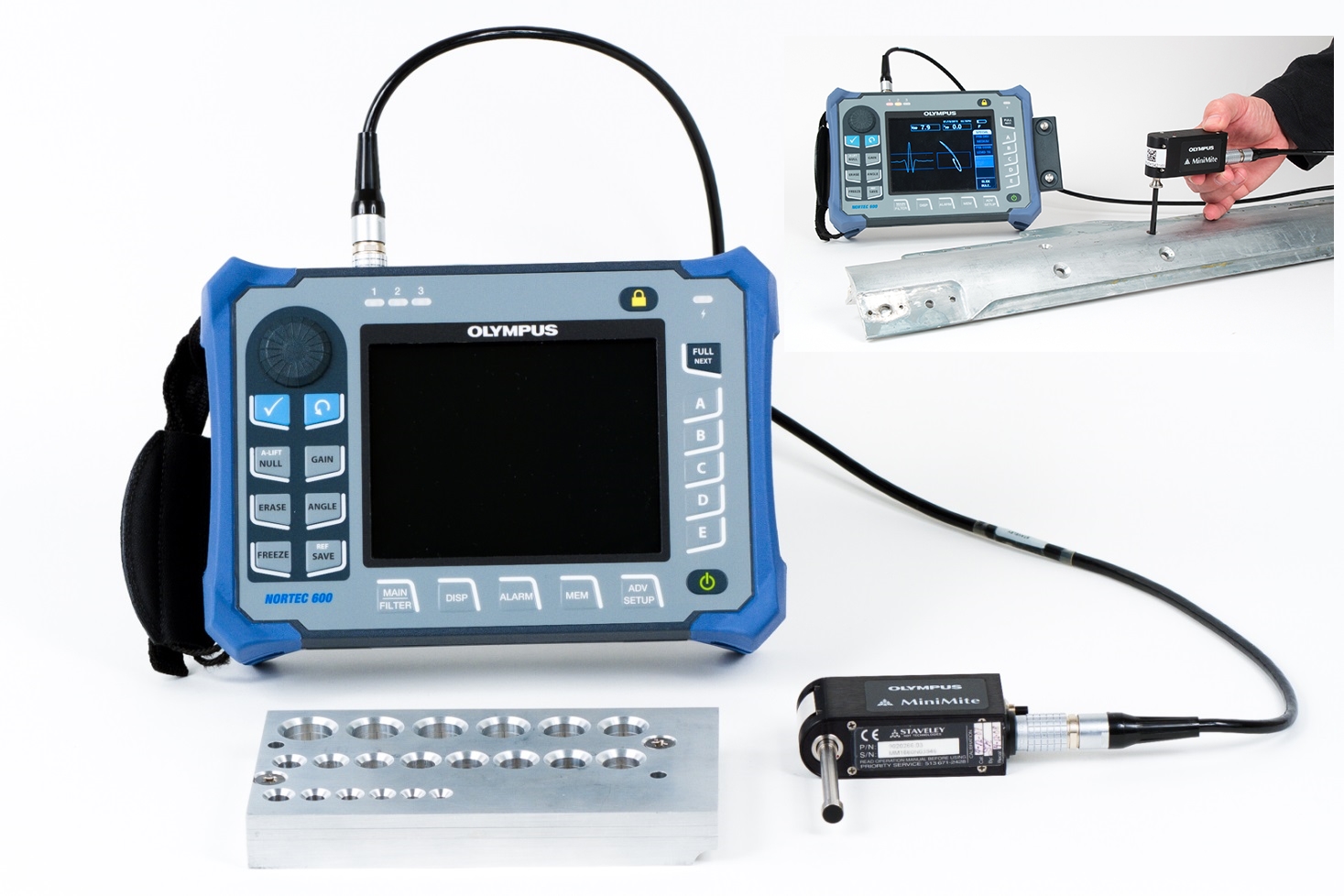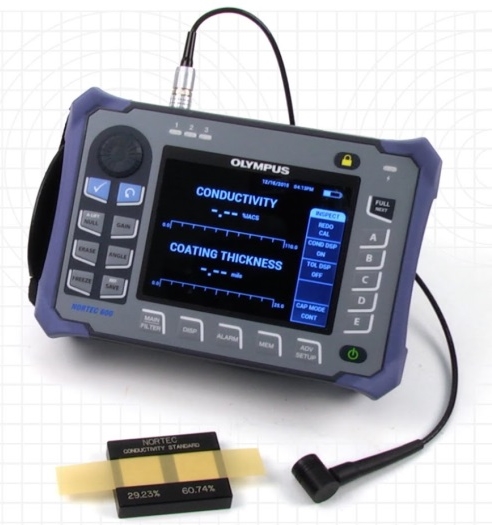Eddy Current Testing
Eddy Current testing (ET, LFEC, HFEC, EC) is an NDO method used to detect defects in metal objects, using the generated eddy currents (electromagnetism). This can detect both surface and deeper defects.

Eddy current is a “clean” technique because no liquids are used. However, before the start of the inspection the surface must be cleaned. A very big advantage is that the coating/paint layer does not have to be removed. Also one can determine the thickness of electrically non-conductive layers.
In the case of eddy current, a probe with a coil is used with an alternating current. This creates a variable magnetic field that, when in contact with a conductive material, induces eddy currents in the tested material.

These eddy currents generate an opposite magnetic field, which will result in a balance coil and object. If a defect is present, the flow of the eddy currents will be disrupted, causing a balance change.
The change will be displayed on a screen, which is called an indication. The direction, speed, shape and altitude of the signal will be interpreted by the inspector. The assessment will be made on the basis of the required standard and/or specification. The indication shall be assessed in accordance with the required standard, resulting in acceptable or unacceptable.
In eddy current testing, different types of probes can be used. A distinction is made between the frequency, the number of coils and the coil configuration. For each application, the best choice of probe and device setting should be made in order to perform an optimal test.

Testing for surface and sub-surface defects. It can also be used for conductivity measurements, thickness measurements and coating thickness measurements.
Testing can be used for all electrically conductive materials, but specifically for the following products:
- Multi-layered constructions for defects or interruptions;
- Thickness measurements of non-ferrous materials;
- Conductivity measurements for heat treatment;
- Detection of intercrystalline corrosion;
- During the in-service phase of airplane construction and components to detect fatigue cracks without removing the coating;
- Highly strained aircraft components, such as fan and/or turbine blades made from Titanium
The inspectors are trained according to the EN4179.
Tests may take place in accordance with all applicable standards and requirements of the principals and ASTM-E-1444.

